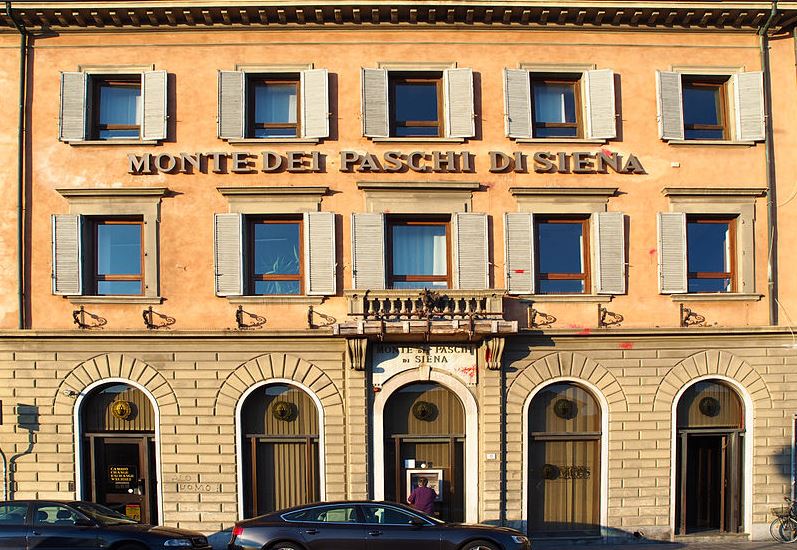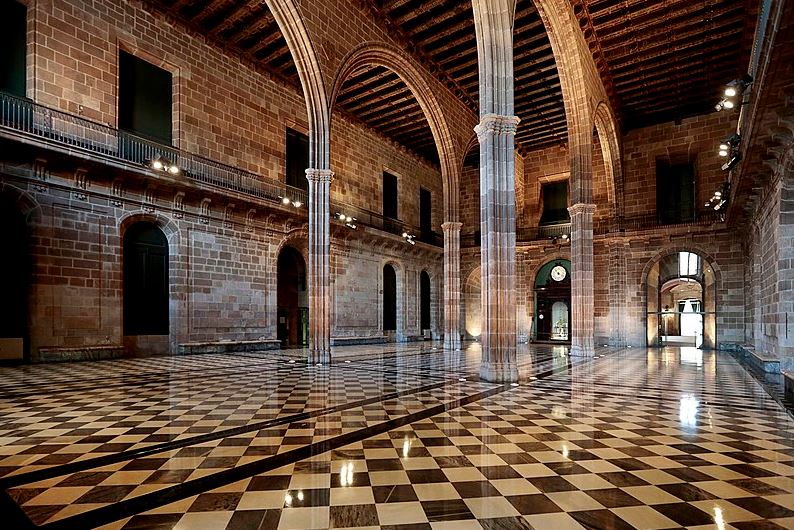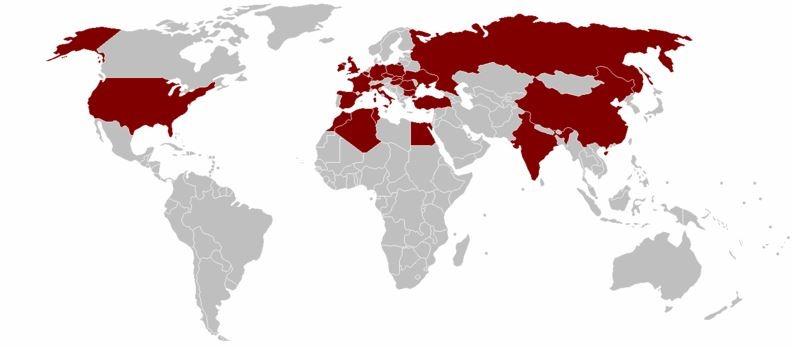Banking has been in some shape or another since the first coins were minted—possibly even before that. Taxation gave rise to currency, particularly coins. As empires grew, functional methods to collect taxes and transfer wealth became necessary.
The majority of people retain their money in a bank account. But have you ever dwelled on what people used to do with their money before banks? People used to keep all of their money in kitchen pots and “pig jars” before we had such advantages.
Banking institutions arose over time, with the first modern banks establishing themselves in Italy in the medieval and early Renaissance periods. The word “bank” stemmed from the Italian word “Branco.”
Although several of the world’s oldest banks have been in continuous operation for centuries, what was the name of the world’s first bank on record? Continue reading to find out.
The First Recorded Bank in the World: Taula de la Ciutat
You can trace banking techniques to the Roman Empire, but the Taula de la Ciutat, which started in Barcelona in 1401, is the world’s first bank on record. The bank was established to serve as the Catalan government’s treasury resource. Even though banking has been practiced for generations, it is credited as the world’s first official bank.
The World’s Oldest Surviving Bank
It is widely assumed that the first bank in the world was founded in Siena during the 14th century, at the Italian Renaissance’s peak. Sienna was part of the Republic of Florence, one of Italy’s most prominent financial capitals. Banca Monte dei Paschi di Siena is the bank’s name, which was founded in 1472.
However, there is significant debate about which bank is the oldest in the world for two reasons. On the one hand, the concept of ‘banking’ is a crucial distinction because merchant banking predated commercial banking by several centuries in the early days of European finance.
The Berenberg Bank in Hamburg is the oldest globally without discriminating between commercial and merchant banks. It is the oldest bank of any type globally, having been established in 1590 in what was then the German section of the Holy Roman Empire. It is interesting to note that it has been owned and controlled by the same family since its inception – more than 400 years!
Banca Monte dei Paschi di Siena was restructured into its current form in 1624 due to changes in banking organization throughout the two centuries following the creation of the Siena bank. Due to this, there is significant debate about whether Berenberg or Banca Monte dei Paschi di Siena should be considered the world’s first bank.
History
The Banca Monte dei Paschi di Siena can trace its roots back to a mount of piety (monte di pietà) established by order of the Republic of Siena’s Magistrature on March 4, 1472, when its law was ratified. As a result, it is frequently referred to as the world’s oldest continuously operating bank. The Statuto dei Paschi, issued in 1419, is the company’s origin. It is a rule that governs all agricultural and pastoral activity in Maremma.
Its current form stemmed from 1624 when Siena became part of the Grand Duchy of Tuscany, and Grand Duke Ferdinando II handed depositors of Monte the revenue from the state-owned meadows of Maremma in exchange for their warranty (the so-called “Paschi” that gave the bank its name). During the 17th and 18th centuries, the bank consolidated and expanded its banking operations.
With Italy’s unification, the bank expanded its operations over the Italian peninsula, launching new ventures such as mortgage loans, which were a first in Italy. After it was bailed out, MPS was also a big shareholder in Cassa di Risparmio di Prato.
In 1995, the Italian Republic’s Ministry of the Treasury issued a decree establishing two institutions: Fondazione Monte dei Paschi di Siena and Banca Monte dei Paschi di Siena S.p.A., a non-profit organization whose statutory purpose is to provide social utility, assistance, and charity in the fields of education, health, science, and art, particularly in the city and province of Siena.
Banca Monte dei Paschi di Siena was successfully listed on the Italian Stock Exchange on June 25, 1999.
Economic and Cultural Growth
The MPS headquarters in Siena’s Palazzo Salimbeni houses an art collection and a vast quantity of important historical papers dating back centuries. This collection, however, is rarely exposed to the public.
A gold-plated panel by Segna di Bonaventura, the bank’s most recent publicly recognized art buy, cost roughly one million euros. It is also well-known internationally as the principal sponsor of Mens Sana Basket of Siena, an Italian basketball team competing in Lega A and a regular in the Euroleague.
The bank was sponsoring the expansion of Siena–Ampugnano Airfield, a small airport in the center of the Tuscan countryside, to become an international airport in 2010. Local and international organizations had objected to the development, claiming that it would harm the ecology, the area’s natural beauty, and the countryside’s tourism appeal. Aeroporto di Siena S.p.A., the project’s incorporated firm, was eventually liquidated.
Profits from the bank were used to fund the Palio di Siena, historic-building renovations in Siena, and “biotech programs” aimed at turning the Tuscan plain into a research powerhouse until the euro crisis. Since 2010, nearly all of that money – an average of $150 million per year from 1996 to 2010 – has “evaporated.”
According to the financial report of the banking foundation, which served as both the bank’s largest shareholder and a charity organization for the Tuscan region, the foundation’s revenue from the bank dropped sharply in 2009, from €340 million to just €62.5 million, impacting the endowment to other organizations. Since 2010, the foundation has had to suspend all endowments to other organizations due to various losses linked and unrelated to the bank.
Over time, the banking industry has changed dramatically. When internet banking was introduced in 2010, it was one of the most significant advances.
The fact that the world’s oldest banks are still surviving is a testimonial of their capacity to adapt to changing circumstances. They have a lot of culture and history, and with the correct help, they can thrive for a long time.




